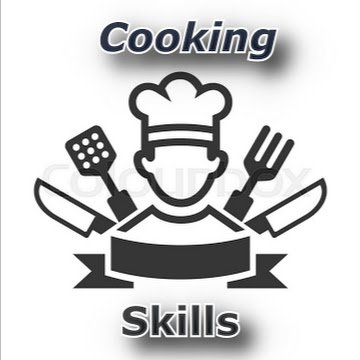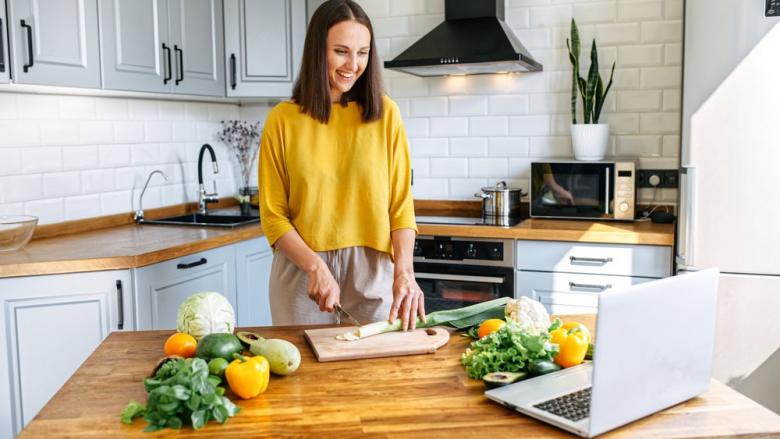
It is important that you can create a simple yet effective checklist of cooking skills for your children. These skills range from developing creative recipes to ensuring that the kitchen is safe. Here are some tips to help you teach your children these essential skills. Here's a sample checklist:
Here are some essential culinary skills
The ability to properly prepare food is an essential skill for any chef. This includes determining the freshness and preparation of meats, fruits, and vegetables as well as converting traditional recipes into larger quantities. A chef should have excellent time management skills, and an acute sense of taste and smell. In addition, he or she should be able to properly handle knives and food equipment.
Sauteing is a versatile cooking technique that can be used for a variety of ingredients. Particularly delicious are lightly sauteed vegetables or shrimp in garlic butter. Braising, which is one of the oldest cooking methods, involves boiling over an open fire. It is a fairly basic skill, but is still very useful. You can learn how to boil a meal and become a great cook. You should also know how to use a knife, and safety tips.
Creativity in cooking
Creative recipes are essential to your success when cooking a meal. These creative recipes are not only a showcase of your creativity but also a showcase of your skills. Divergent thinking, or creative thinking, allows you think outside of the box to generate new ideas. This is an important skill for a cooking career, because it allows you to experiment with different flavors and cooking techniques and impress your customers. Your employer will be impressed by your creativity and willingness to try new flavours. You can experiment with different flavors and come up creative themes for your meals. You can improve your creativity by brainstorming and researching different cooking methods.

The problem with cooking skills is their inconsistent definitions. The authors are not able to agree on which skill is more important. However, they do agree that it should be redefined. They argue that the definition of a skill should be evolved from the perceived "Golden Age" when cooking skills were developed beyond a person's ability to prepare basic foods. These skills must be developed and used to create a healthier and more vibrant future for food.
Safe cooking in the kitchen
For the safety of your staff, it is important to create a safe space in a commercial kitchen. The kitchen can be a potentially dangerous place with electrical appliances, bacteria, and an open fire in the oven. The first steps are to develop a plan and purchase safety equipment. Additionally, never leave young children unattended in the kitchen. A safety plan and proper training can help to prevent accidents.
All kitchen staff must be trained in fire-safety and fire-resistance. You can get fire-safety training through your local fire department. Staff in the kitchen should be familiar with where fire blankets and extinguishers are and how they can be operated. If necessary, training should be given to employees in CPR as well as first aid. When possible, kitchens should have non-slip flooring and mats.
Identification of food safety hazards
You must identify food safety hazards before you prepare any meal, or cater for special occasions. It is essential to identify possible hazards when preparing food. Failure to do this can result in regulatory action and brand damage. Codex HACCP compliance is crucial for food businesses, and identifying hazards is a fundamental requirement.

There are many hazards that could be dangerous for humans. They can be from people, plants, packaging, or both. Different physical hazards are more likely to cause disease or injury than others. These hazards don't have to be necessarily dangerous. They just need to be eliminated. To find potential hazards, identify the source and figure out how to minimize it. You can also look for the source of the risk by observing the product.
FAQ
How to be a Chef
There are many avenues to become a professional chef. To start, you can take a course at your local community college. You might also consider going to culinary school. You can also apply for a paid internship.
What are the benefits to using a slow cooker
Slow Cookers are very useful because they allow you to prepare delicious meals without wasting time. Slow cooker recipes are more healthy than traditional dishes because they use less oil. Also, slow cooker recipes are easy to use because they do all the work while you sleep.
What skills are necessary to attend culinary school
You will need to know how to cook, understand food safety regulations, and be able work under pressure in order to become a chef. For a basic understanding of cooking, it is advisable to enroll in cooking classes at the local high schools or community colleges. After you have learned the basics, you can apply for jobs in a restaurant or catering business.
How Much Does it Cost to Learn Culinary Arts Skills?
It is not easy to find a culinary arts degree that costs less than $40,000. For example, a 4-year degree costs about $40,000. A two year associate's degree might cost less than $5,000. Tuition rates depend on the type of program you select. The tuition rates for private institutions are usually higher than those of public universities.
Statistics
- On average, chefs earn $58,740 a year, according to the BLS. - learnhowtobecome.org
- You'll be amazed that over 90% of CIA students receive scholarships and grants to finish their culinary studies. (ischoolconnect.com)
- In the United States, the category is estimated at $23.2 billion annually and is growing faster than the market. (washingtonpost.com)
External Links
How To
How to make a perfect omelet
Omelets are a favorite breakfast food of mine. How do you make them perfect? I have tried many different recipes and methods, but none of them work. So today, I want to share some tips and tricks with you so you can make your own delicious and fluffy omelets every morning.
We should first know that eggs are very temperamental ingredients when making omelets. The eggs must be fresh from an organic source and kept at room temperature until they are ready to be cooked. If you don't keep them cold enough, the whites won't form properly, and the yolks will break down too much and become runny. Your omelets will look strangely colored if this happens. If you're going to cook them immediately, it is best if the eggs are still warm.
You can also separate the egg before you add it to the pan. Because this could cause your omelet to become curdled, you don't want any yolk to be mixed with any white.
You could end up burning the bottom half of the egg if the egg is added directly to the heat source. Instead, heat the egg for 10 seconds in the microwave before placing it in the pan. The microwave heat will cook the egg just right without making it too hot.
Next, let’s talk about mixing the egg. You want to mix the eggs thoroughly before you add them. To do this, grab the bowl of the mixer and turn it upside down. Next, shake the bowl vigorously. The egg will be thoroughly mixed in the bowl as the air is whipped.
The fun part begins - you need to pour the milk into your mixture. Pour half the milk into the beaten egg mixture and then fold in the eggs. If you still see streaks of eggs, don't worry. These streaks will disappear once the omelet has been turned over.
After you have done folding the eggs, heat the pan on medium heat. The oil will start to smoke. Once the oil begins to heat, add 1/4 cup butter and swirl the pan to coat it. Next, carefully open the lid and sprinkle salt into your pan. Salt will prevent the omelet sticking to the pan.
Once the omelet has formed completely, cover the pan and let it set for a few minutes. Flip the omelet with a spatula, or flip it upside down. Cook the other half for another minute. Take out the omelet and place it in a bowl.
This recipe is best made with whole milk. However, it can also be used with skimmed milk.